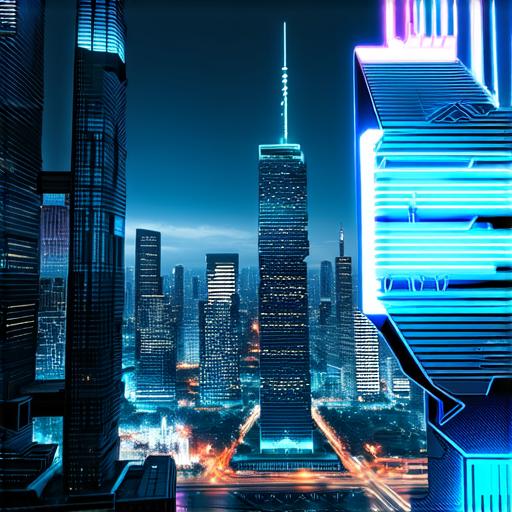Support for Various 3D File Formats
One of the key advantages of Unity as a 3D modeling platform is its support for a wide range of 3D file formats. This allows users to easily import and export 3D models from other software tools, making it easy to integrate 3D content into their Unity projects.
Some of the most commonly supported 3D file formats include:
- .obj: A standard format for representing 3D objects, often used in traditional CAD and 3D modeling software.
- .fbx: A proprietary format developed by Autodesk for use with their 3D modeling software, such as Maya and 3ds Max.
- .dae: Another proprietary format developed by Autodesk, often used for exchanging data between different Autodesk applications.
- .stl: A standard format for representing 3D surface meshes, often used in rapid prototyping and 3D printing.
- .collada: An open-source format for representing 3D objects, often used in web-based 3D graphics and animations.
In addition to these standard formats, Unity also supports a number of other specialized file formats, including those used by popular 3D modeling tools such as Blender, Cinema 4D, and ZBrush.
Built-in Tools for Creating and Manipulating 3D Objects
In addition to its support for a wide range of 3D file formats, Unity also comes equipped with a number of built-in tools for creating and manipulating 3D objects. These tools include:
- The Sculpting feature, which allows users to create detailed and realistic 3D models by applying textures and materials directly to the surface of the object.
- The Terrain tool, which allows users to create and manipulate 2D and 3D terrain surfaces, including adding hills, valleys, and other features.
- The Particle System, which allows users to create a wide range of visual effects, such as explosions, smoke, and water.
- The Animation feature, which allows users to create and animate 3D objects using keyframes and other animation techniques.
- The Lighting feature, which allows users to create and adjust the lighting in their scenes, including adding shadows, reflections, and ambient light.
Unity also has a number of plugins available that add even more functionality to these built-in tools. For example, the Unity Asset Store offers a wide range of plugins for creating realistic water effects, animating characters and objects, and more.

Integration with Other Tools in the 3D Modeling Industry
In addition to its built-in tools and support for various 3D file formats, Unity also integrates well with other popular tools in the 3D modeling industry. Some of these tools include:
- Blender: A powerful open-source 3D modeling software that can be used to create a wide range of 3D assets, including characters, objects, and environments.
- Cinema 4D: A professional-grade 3D modeling and animation software that is widely used in the film and television industry.
- ZBrush: A powerful sculpting and modeling tool that is commonly used for creating detailed 3D models, particularly in the gaming and entertainment industries.
- Autodesk Maya and 3ds Max: Two of the most popular 3D modeling software tools in the industry, which can be used to create a wide range of 3D assets, including characters, objects, and environments.
By integrating with these and other tools, users can take advantage of the strengths of each tool and use them together to create more complex and sophisticated 3D projects.
Case Study: Using Unity for 3D Modeling in a Game Development Project
To illustrate how Unity’s 3D modeling capabilities can be used in a real-world game development project, let’s take a look at the following case study.
A team of game developers wanted to create a new action game that would be played on mobile devices. In order to create the 3D models and environments for the game, they decided to use Unity as their game engine.
Using Unity’s built-in tools and plugins, the team was able to quickly create detailed 3D models of characters, objects, and environments that fit seamlessly into the game world. They also took advantage of Unity’s support for various 3D file formats, importing assets from other software tools as needed.
One of the key benefits of using Unity for 3D modeling in this project was its ability to integrate with other tools in the team’s workflow. For example, they used Blender to create detailed 3D models that could be easily imported into Unity, and Cinema 4D to animate these models in a way that felt natural and believable within the game world.
By using Unity for 3D modeling, the team was able to create a high-quality game with rich, detailed environments and characters that players would love to explore. They were also able to complete the project more quickly than they might have if they had used other tools or software, thanks to Unity’s built-in support for 3D modeling and its ability to integrate with other tools in their workflow.
FAQs
Q: What are some of the most commonly supported 3D file formats in Unity?
A: The most commonly supported 3D file formats in Unity include .obj, .fbx, .dae, .stl, and .collada. Unity also supports a number of other specialized file formats used by popular 3D modeling tools such as Blender, Cinema 4D, and ZBrush.
Q: What built-in tools does Unity offer for creating and manipulating 3D objects?
A: Some of the built-in tools in Unity that are useful for creating and manipulating 3D objects include the Sculpting feature, Terrain tool, Particle System, Animation feature, and Lighting feature. There are also many plugins available on the Unity Asset Store that add even more functionality to these tools.
Q: How does Unity integrate with other tools in the 3D modeling industry?
A: Unity integrates well with a wide range of popular tools in the 3D modeling industry, including Blender, Cinema 4D, ZBrush, and Autodesk Maya and 3ds Max. By using these tools together, users can take advantage of the strengths of each tool and use them to create more complex and sophisticated 3D projects.
Q: Can Unity be used for 3D modeling in a game development project?
A: Yes, Unity can be used for 3D modeling in a game development project. In fact, it is one of the most popular game engines used for this purpose. By using Unity’s built-in tools and integrating with other tools in their workflow, game developers can create high-quality games with rich, detailed environments and characters that players will love to explore.
Q: What is the summary of this article?
A: Unity is a powerful game engine with built-in tools for 3D modeling and support for various 3D file formats. It integrates well with other popular 3D modeling software, allowing users to take advantage of the strengths of each tool in their workflow. By using Unity for 3D modeling, developers can create high-quality games with rich, detailed environments and characters that players will love to explore.
